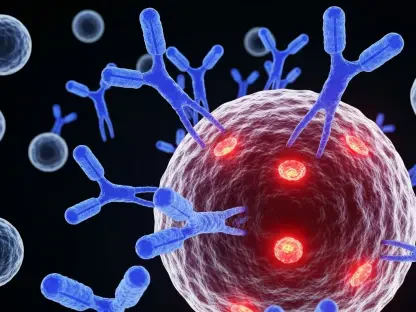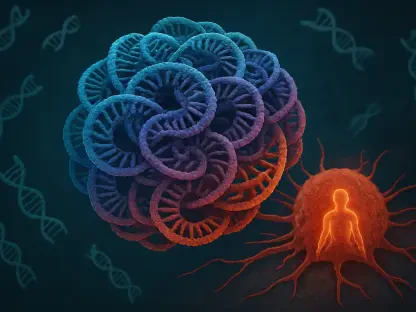The prevalence of autism spectrum disorder (ASD) in males as opposed to females has baffled researchers for years, sparking a multitude of investigations aimed at uncovering the underlying genetic factors. Recent studies published in the American Journal of Human Genetics have unveiled groundbreaking findings that bring us a step closer to understanding why ASD is more commonly diagnosed in males. Two separate research endeavors from the Hospital for Sick Children (SickKids) in Canada and the Istituto Giannina Gaslini in Italy have pinpointed genetic variants on the X chromosome that could hold the key to this gender disparity.
Genetic Discoveries on the X Chromosome
DDX53 Gene and Its Role in Brain Development
One of the pivotal studies uncovered that variants in the DDX53 gene were maternally inherited and exhibited a significant male predominance. This gene, although previously not associated with autism, plays a crucial role in brain development. In their detailed investigation, researchers analyzed 10 individuals with ASD from eight different families. They found that the genetic variants present in these individuals were predominantly inherited from their mothers and were more common in males. This revelation indicated that the DDX53 gene might be a contributing factor to the higher incidence of ASD in males.
The brain’s complex development process involves a multitude of genetic interactions, and the role of DDX53 adds another layer to this intricate puzzle. Prior to this study, the focus had not been on this gene, so its association with ASD is particularly noteworthy. By identifying variants in DDX53, researchers are now better equipped to explore its contribution to brain development abnormalities that manifest in ASD. Understanding how these genetic variants influence brain function and behavior can pave the way for targeted research and potential therapeutic interventions.
Novel Genetic Associations with ASD
In addition to DDX53, the researchers identified 59 significant genetic variants on the X chromosome that are associated with ASD. These variants include genes previously linked to the disorder, such as PTCHD1-AS, DMD, HDAC8, PCD#1X, and PCD#9, as well as newly identified candidates, ASB11 and ASB9. Each of these genes plays a unique role in brain development and function, contributing to the complex genetic landscape of ASD.
Previous studies had highlighted the role of individual genes, but this comprehensive analysis underscores the importance of examining a broader spectrum of genetic variants. These findings challenge researchers to rethink current genetic models and to consider the combined effect of multiple genetic factors on ASD. Identifying these variants allows for a more holistic approach to understanding ASD’s genetic underpinnings, which could ultimately lead to more precise and effective diagnostic tools and treatments.
Implications for Autism Research and Diagnosis
The Complex Genetic Landscape of ASD
Senior author Stephen Scherer emphasized the complexity of autism and the necessity for a comprehensive genetic analysis. The identification of the DDX53 gene and others linked to ASD provides new insights into the biological mechanisms underlying the disorder. These findings highlight the intricate interplay of genetic factors involved in ASD and the importance of looking at the X chromosome in particular. By expanding our understanding of the genetic basis of ASD, we are better positioned to develop improved diagnostic tools and interventions.
The research further underscores the need to develop new models for autism research, considering the absence of a functional equivalent to DDX53 in commonly used mouse models. The challenge lies in translating these genetic discoveries into actionable insights that can be used in clinical settings. As we continue to uncover the genetic intricacies of ASD, the goal is to refine our models and methods to better mirror human genetic and neurological structures. This advancement is essential for translating genetic research into practical applications that benefit individuals with ASD and their families.
Future Directions in Genetic Research
The higher prevalence of autism spectrum disorder (ASD) in males compared to females has puzzled researchers for years, leading to numerous studies to uncover the genetic roots of this disparity. Recent research published in the American Journal of Human Genetics has revealed significant discoveries that help explain why males are more frequently diagnosed with ASD. Two independent studies conducted by the Hospital for Sick Children (SickKids) in Canada and the Istituto Giannina Gaslini in Italy have identified genetic variants on the X chromosome that may be crucial in understanding this gender difference. These pioneering findings could pave the way for new approaches in diagnosing and treating ASD, particularly by shedding light on the role that X-linked genes play in its development. This research marks a pivotal step forward in the quest to decipher the intricate genetic landscape of ASD and highlights the importance of continuing to explore gender-specific genetic mechanisms in neurodevelopmental disorders.









